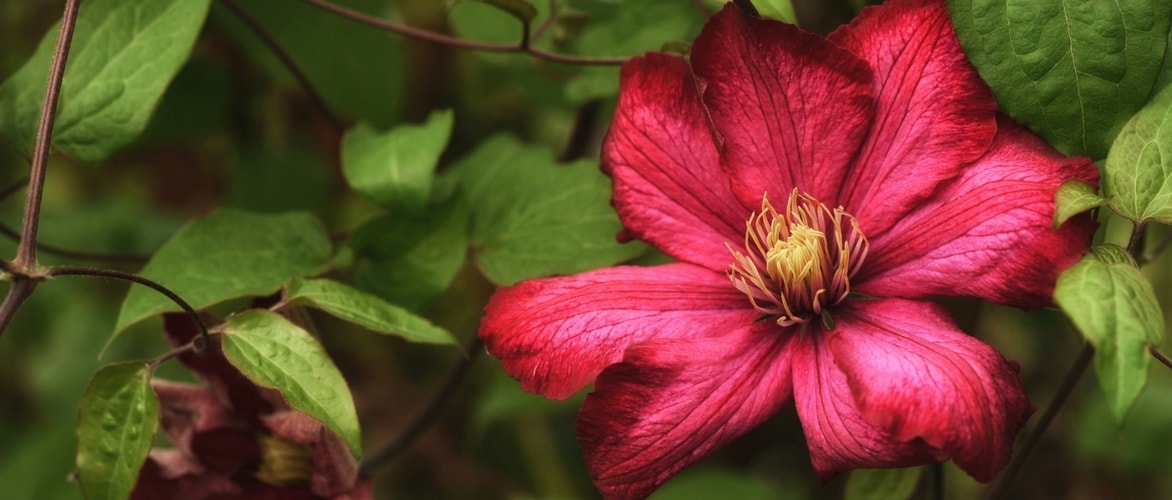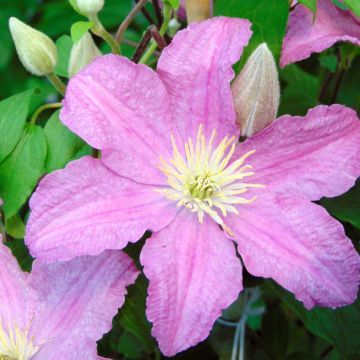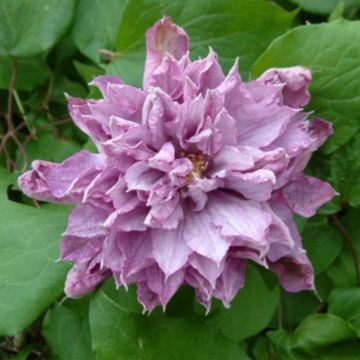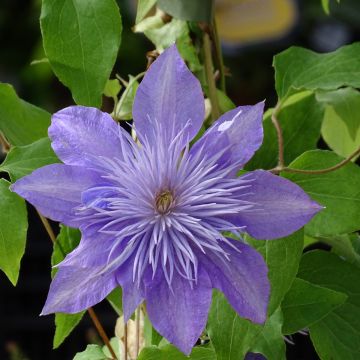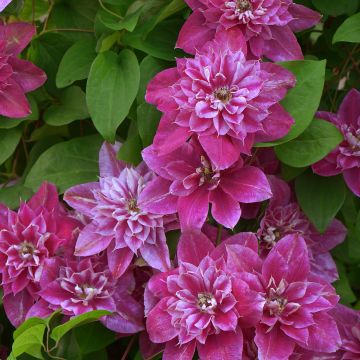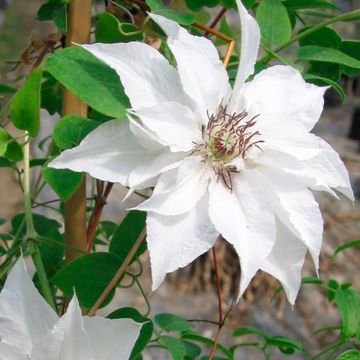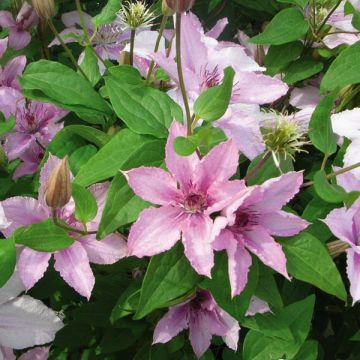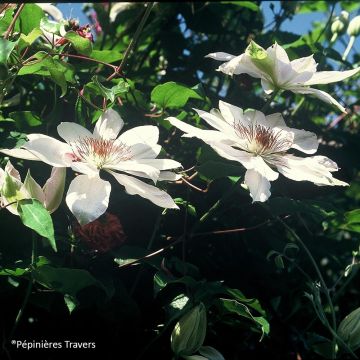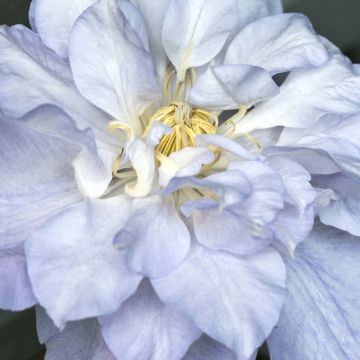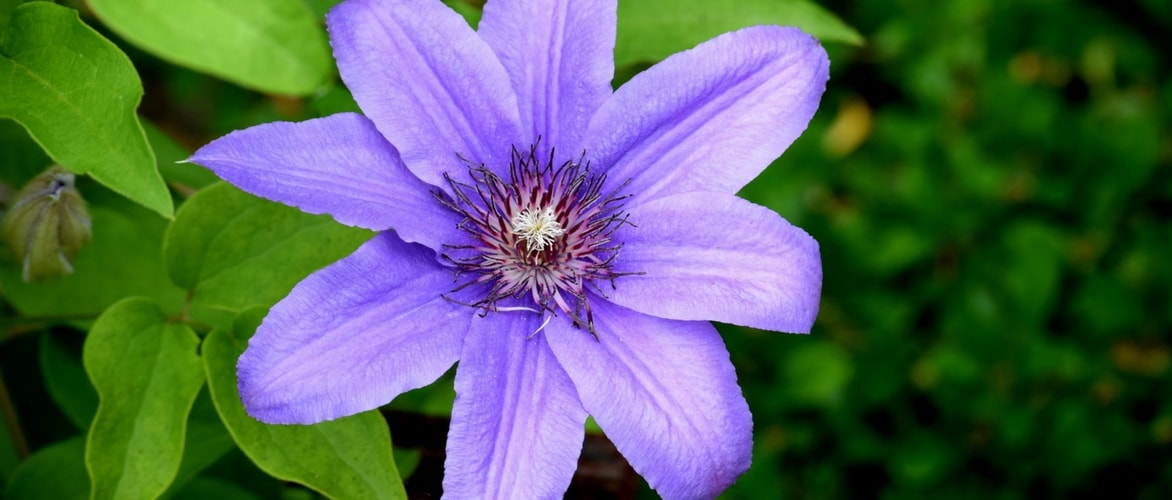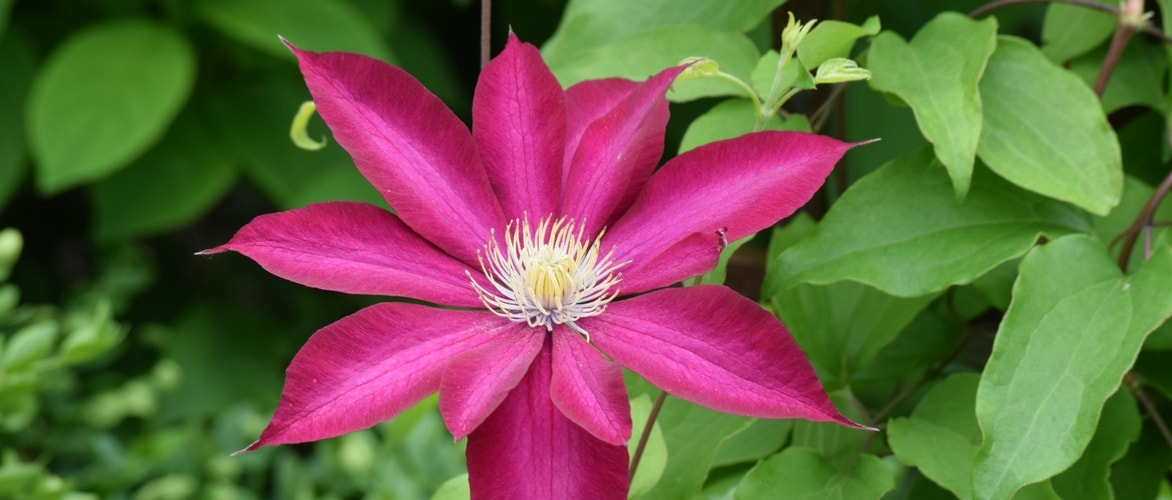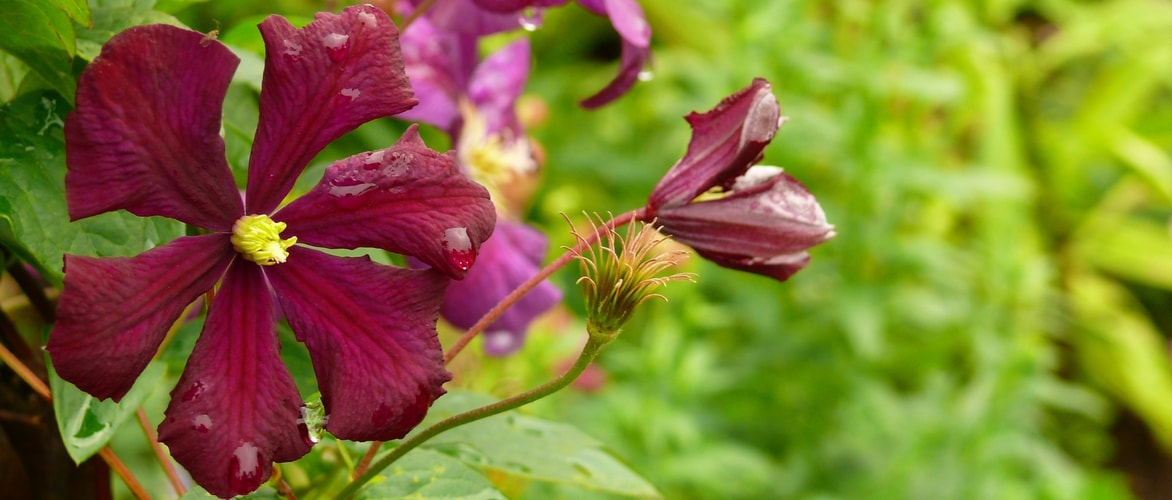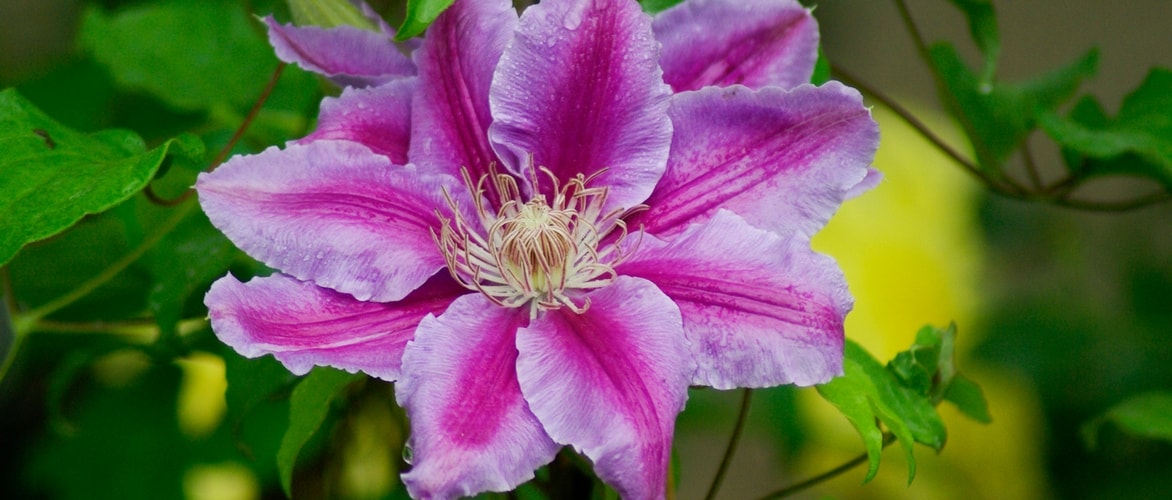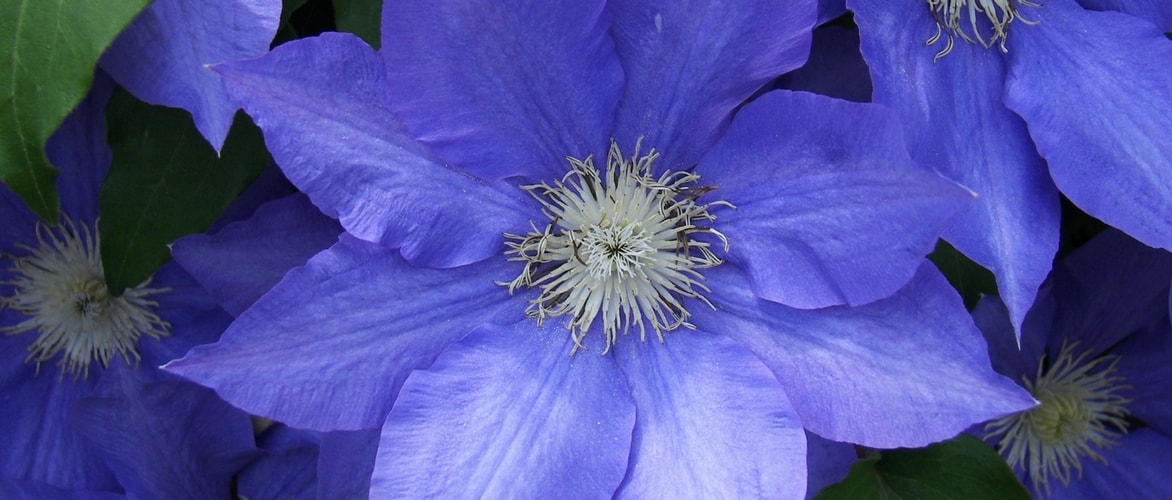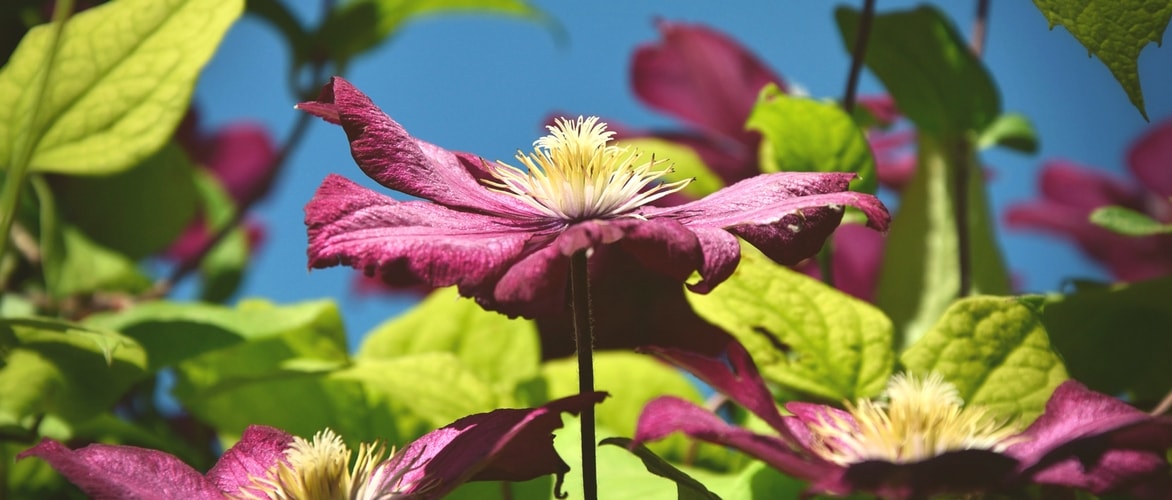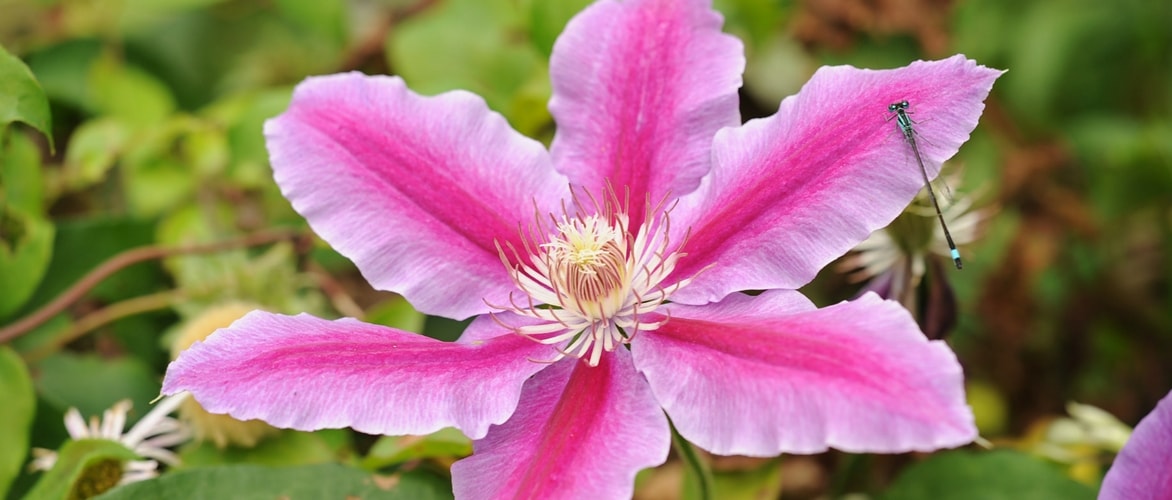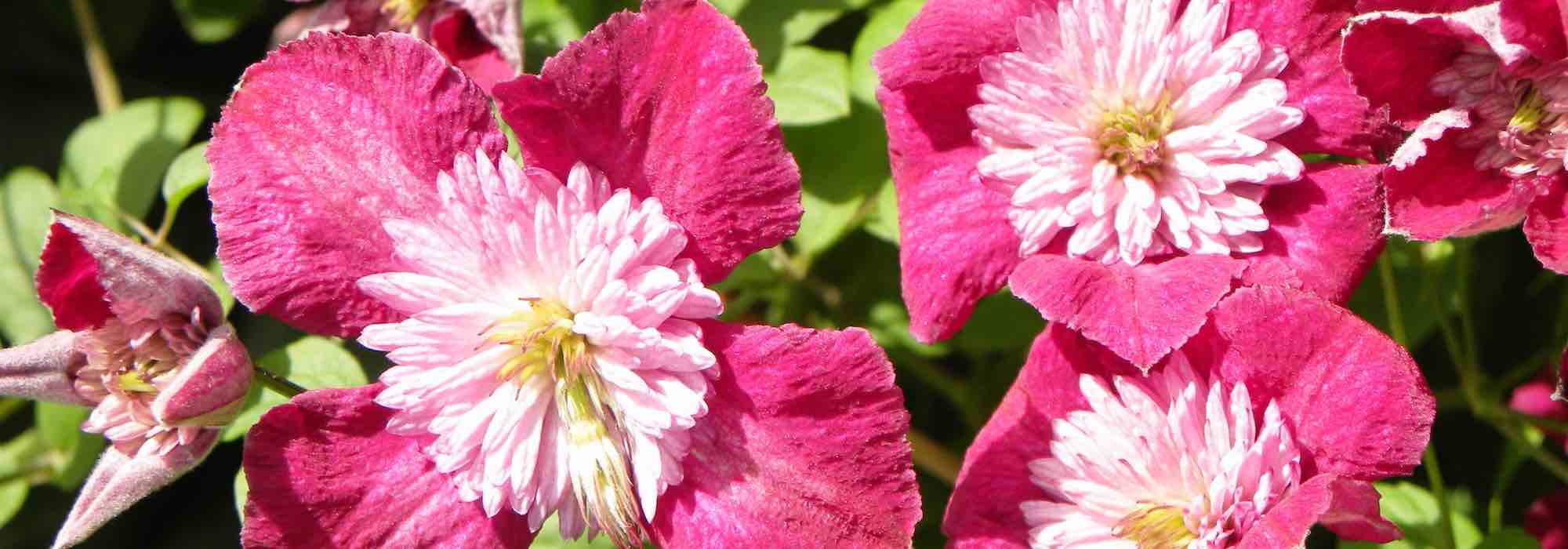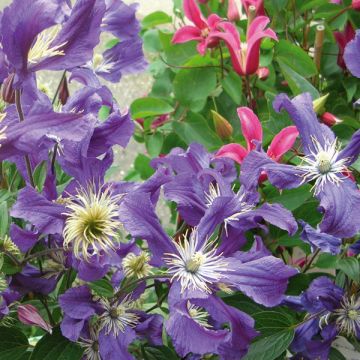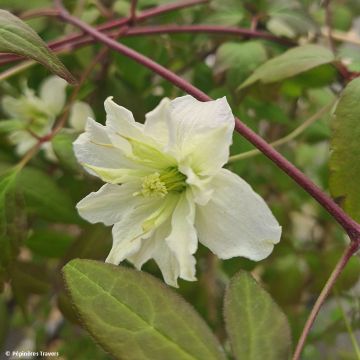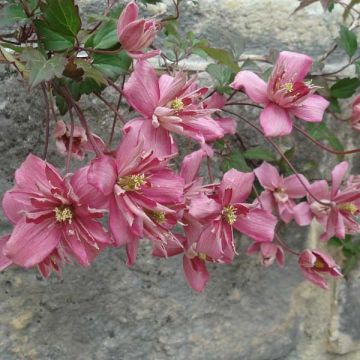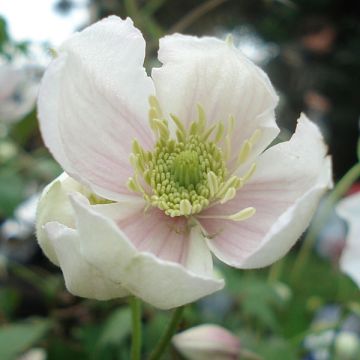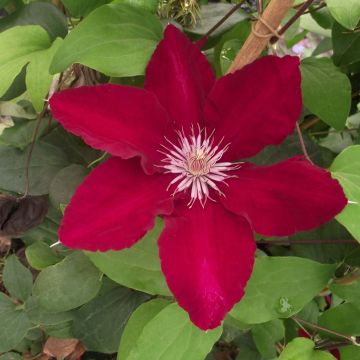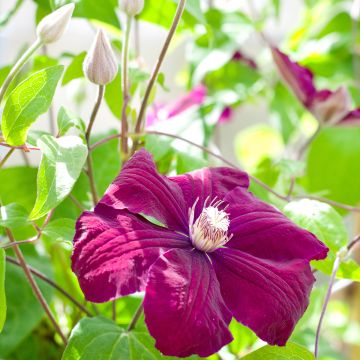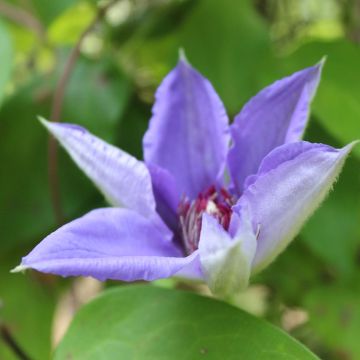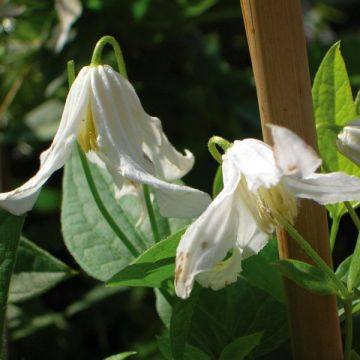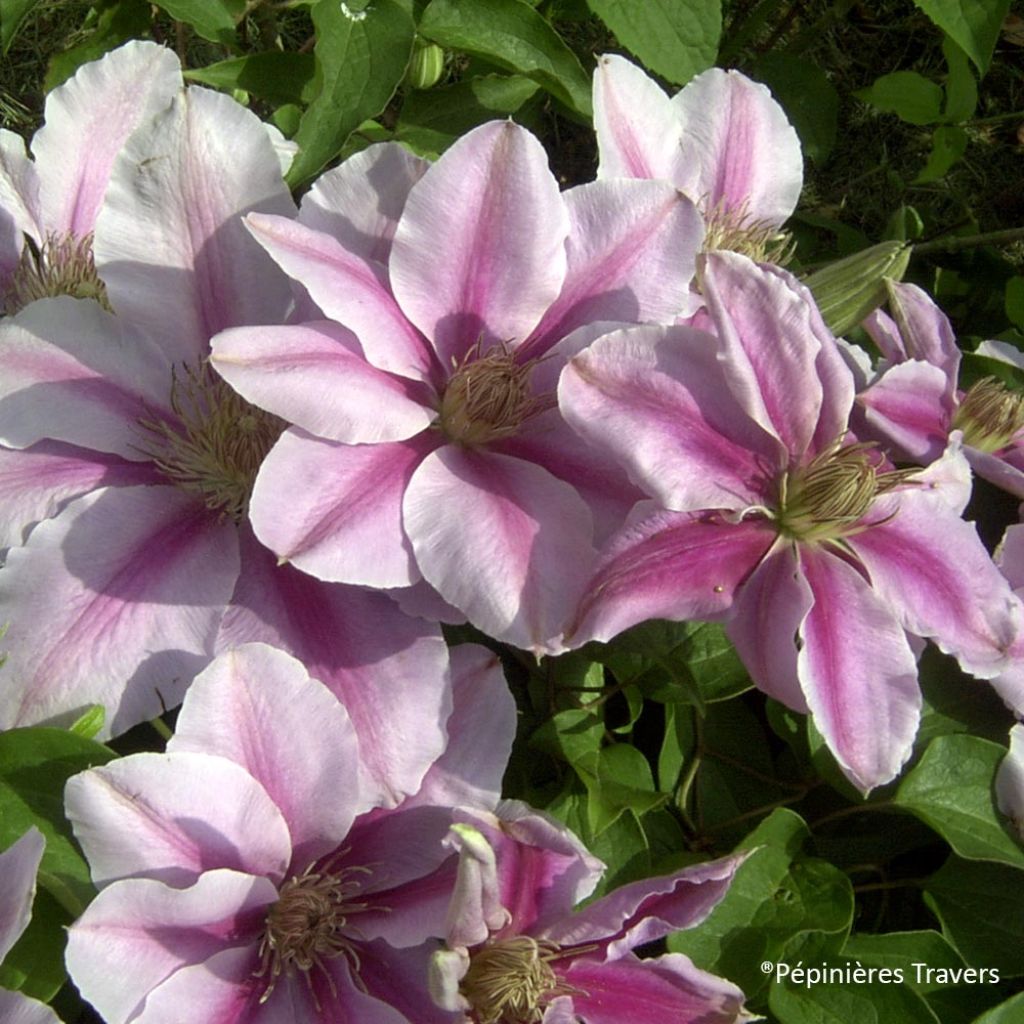

Clematis Bees' Jubilee
Clematis Bees' Jubilee
Clematis Bee's Jubilée
I planted this clematis on May 18th in a planter to dress it up, and I think it will thrive and grow. To be continued.
Brigitte D, 26/05/2025
Special offer!
Receive a €20 voucher for any order over €90 (excluding delivery costs, credit notes, and plastic-free options)!
1- Add your favorite plants to your cart.
2- Once you have reached €90, confirm your order (you can even choose the delivery date!).
3- As soon as your order is shipped, you will receive an email containing your voucher code, valid for 3 months (90 days).
Your voucher is unique and can only be used once, for any order with a minimum value of €20, excluding delivery costs.
Can be combined with other current offers, non-divisible and non-refundable.
Home or relay delivery (depending on size and destination)
Schedule delivery date,
and select date in basket
This plant carries a 6 months recovery warranty
More information
We guarantee the quality of our plants for a full growing cycle, and will replace at our expense any plant that fails to recover under normal climatic and planting conditions.


Does this plant fit my garden?
Set up your Plantfit profile →
Description
Clematis 'Bees' Jubilee' is one of the most floriferous varieties, bearing large mauve-pink flowers with wide carmine stripes. They appear from May to June and bloom again in September. With a fairly compact growth and sturdy habit, this clematis is more suitable for cultivation in pots and small gardens. It is hardy everywhere. Plant it in a location where its head will be in the sun and its base in the shade of a perennial ground cover.
The 'Bees' Jubilee' cultivar was developed by the English nursery Bee's Ltd Nurseries in 1958 and named to celebrate their 25th anniversary. This deciduous climber belongs to the Ranunculaceae family. Like most of its cousins, this clematis prefers light, deep, moist, and fertile soil that is preferably neutral. It appreciates a sunny or partially shaded position, with its base always in the shade. It is frost-resistant and can withstand even prolonged freezing temperatures. However, it does not like stagnant moisture, so the substrate should be well-draining and watering should be moderate (if necessary, especially in the first year). It can be grown in a pot if the container is sufficiently large (minimum 60cm (24in) in diameter).
'Bees' Jubilee' is a reasonably sized climber that can reach 2m (7ft) in height and 1m (3ft) in width. It belongs to Group 2 of clematis, which means it flowers in spring and blooms again in autumn. The previous year's stems will bear the spring flowers from May to June. The first flowers of this variety can be double. These flowers normally have 5 to 9 tepals and reach 15 to 18cm (6 to 7in) in diameter. The late summer flowering (carried by the current year's branches) occurs in September. The flowers, then single stars, display the same shades that give them a piquant charm. The tepals, ending in a point and often with undulated margins, overlap in this species. Fruits then appear, decorating the foliage and remaining until winter. The leaves, composed of 3 to 5 leaflets, are deciduous and a beautiful bright green. They are borne on voluble petioles that twine around their support.
In a pot, with a trellis to support it, 'Bees' Jubilee' will reward owners of a small balcony and will flower for a long time, even in partial shade. Place some spring bulbs or a geranium at its base and enjoy the show with minimal maintenance. It can also be paired with a bell-shaped flowering clematis, such as C. viticella 'Etoile Rose', which has a light form and bright colour. If you have a larger space, this non-invasive clematis can climb a bamboo teepee or column, adding verticality to a bed with vibrant colours.
Clematis Bees' Jubilee in pictures
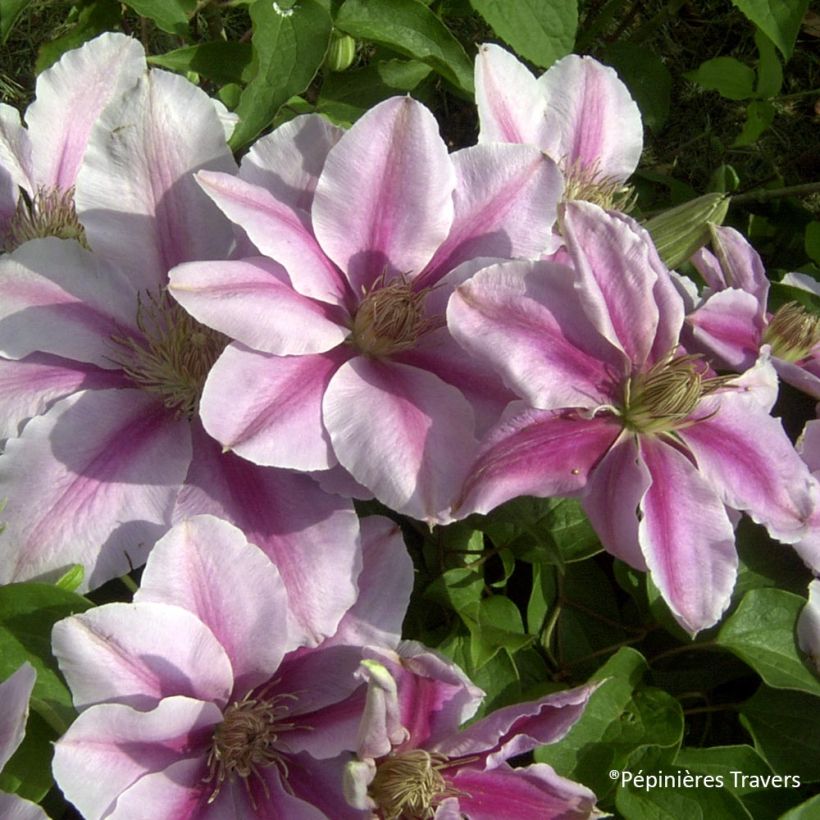

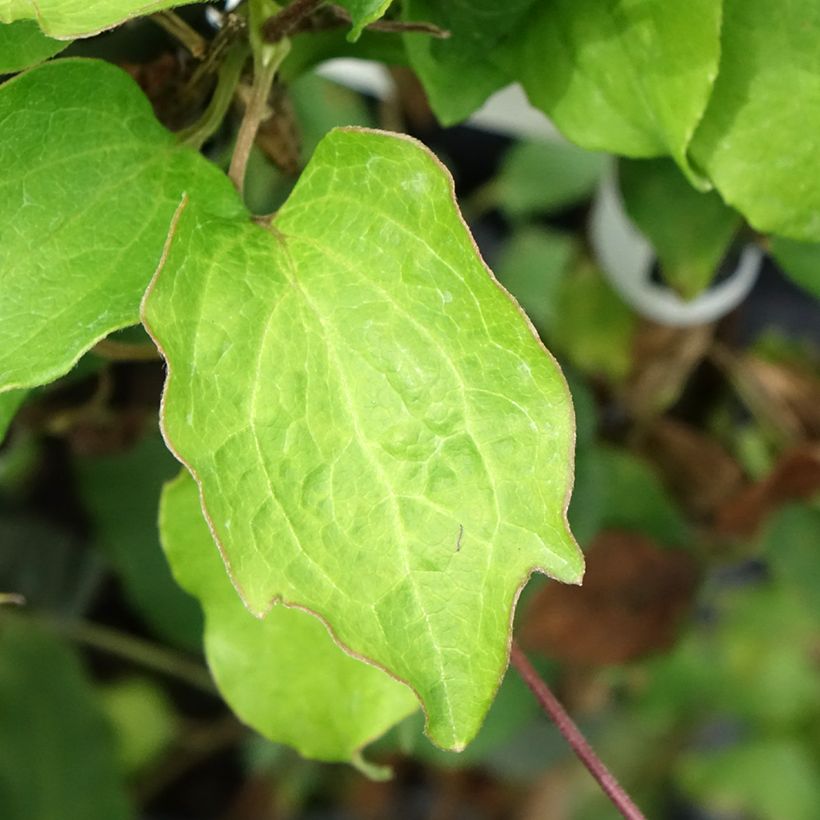

Plant habit
Flowering
Foliage
Botanical data
Clematis
Bee's Jubilée
Ranunculaceae
Cultivar or hybrid
Other Clematis Patens
View all →Planting and care
Plant Clematis 'Bees' Jubilee' in spring or autumn. It prefers rather moist but not waterlogged, deep, well-worked, well-drained, rich soils. Choose a position where its head will be in the sun and roots in the shade. Plant at a depth of 5cm (2in), with the root ball placed diagonally or even lying on the ground. You can place a flat tile in front of the stump or use ground cover plants to provide the necessary shade. Cover the foot with a small mound of soil to promote the emergence of new shoots. After planting, prune the stems to 30cm (12in) from the base, above a pair of buds.
Train them loosely to help the plant cling on its own.
Maintenance pruning should then be done after flowering (in mid-summer) to remove faded flowers and shorten the stems that have bloomed. This will help the plant to produce new shoots for a second flowering. More vigorous pruning can be done in spring to cut back certain stems more severely, but not necessarily every year.
Keep an eye out for pests, such as aphids, slugs, and snails.
Planting period
Intended location
Care
Planting & care advice
-
, onOrder confirmed
Reply from on Promesse de fleurs
Similar products
Haven't found what you were looking for?
Hardiness is the lowest winter temperature a plant can endure without suffering serious damage or even dying. However, hardiness is affected by location (a sheltered area, such as a patio), protection (winter cover) and soil type (hardiness is improved by well-drained soil).

Photo Sharing Terms & Conditions
In order to encourage gardeners to interact and share their experiences, Promesse de fleurs offers various media enabling content to be uploaded onto its Site - in particular via the ‘Photo sharing’ module.
The User agrees to refrain from:
- Posting any content that is illegal, prejudicial, insulting, racist, inciteful to hatred, revisionist, contrary to public decency, that infringes on privacy or on the privacy rights of third parties, in particular the publicity rights of persons and goods, intellectual property rights, or the right to privacy.
- Submitting content on behalf of a third party;
- Impersonate the identity of a third party and/or publish any personal information about a third party;
In general, the User undertakes to refrain from any unethical behaviour.
All Content (in particular text, comments, files, images, photos, videos, creative works, etc.), which may be subject to property or intellectual property rights, image or other private rights, shall remain the property of the User, subject to the limited rights granted by the terms of the licence granted by Promesse de fleurs as stated below. Users are at liberty to publish or not to publish such Content on the Site, notably via the ‘Photo Sharing’ facility, and accept that this Content shall be made public and freely accessible, notably on the Internet.
Users further acknowledge, undertake to have ,and guarantee that they hold all necessary rights and permissions to publish such material on the Site, in particular with regard to the legislation in force pertaining to any privacy, property, intellectual property, image, or contractual rights, or rights of any other nature. By publishing such Content on the Site, Users acknowledge accepting full liability as publishers of the Content within the meaning of the law, and grant Promesse de fleurs, free of charge, an inclusive, worldwide licence for the said Content for the entire duration of its publication, including all reproduction, representation, up/downloading, displaying, performing, transmission, and storage rights.
Users also grant permission for their name to be linked to the Content and accept that this link may not always be made available.
By engaging in posting material, Users consent to their Content becoming automatically accessible on the Internet, in particular on other sites and/or blogs and/or web pages of the Promesse de fleurs site, including in particular social pages and the Promesse de fleurs catalogue.
Users may secure the removal of entrusted content free of charge by issuing a simple request via our contact form.
The flowering period indicated on our website applies to countries and regions located in USDA zone 8 (France, the United Kingdom, Ireland, the Netherlands, etc.)
It will vary according to where you live:
- In zones 9 to 10 (Italy, Spain, Greece, etc.), flowering will occur about 2 to 4 weeks earlier.
- In zones 6 to 7 (Germany, Poland, Slovenia, and lower mountainous regions), flowering will be delayed by 2 to 3 weeks.
- In zone 5 (Central Europe, Scandinavia), blooming will be delayed by 3 to 5 weeks.
In temperate climates, pruning of spring-flowering shrubs (forsythia, spireas, etc.) should be done just after flowering.
Pruning of summer-flowering shrubs (Indian Lilac, Perovskia, etc.) can be done in winter or spring.
In cold regions as well as with frost-sensitive plants, avoid pruning too early when severe frosts may still occur.
The planting period indicated on our website applies to countries and regions located in USDA zone 8 (France, United Kingdom, Ireland, Netherlands).
It will vary according to where you live:
- In Mediterranean zones (Marseille, Madrid, Milan, etc.), autumn and winter are the best planting periods.
- In continental zones (Strasbourg, Munich, Vienna, etc.), delay planting by 2 to 3 weeks in spring and bring it forward by 2 to 4 weeks in autumn.
- In mountainous regions (the Alps, Pyrenees, Carpathians, etc.), it is best to plant in late spring (May-June) or late summer (August-September).
The harvesting period indicated on our website applies to countries and regions in USDA zone 8 (France, England, Ireland, the Netherlands).
In colder areas (Scandinavia, Poland, Austria...) fruit and vegetable harvests are likely to be delayed by 3-4 weeks.
In warmer areas (Italy, Spain, Greece, etc.), harvesting will probably take place earlier, depending on weather conditions.
The sowing periods indicated on our website apply to countries and regions within USDA Zone 8 (France, UK, Ireland, Netherlands).
In colder areas (Scandinavia, Poland, Austria...), delay any outdoor sowing by 3-4 weeks, or sow under glass.
In warmer climes (Italy, Spain, Greece, etc.), bring outdoor sowing forward by a few weeks.






























